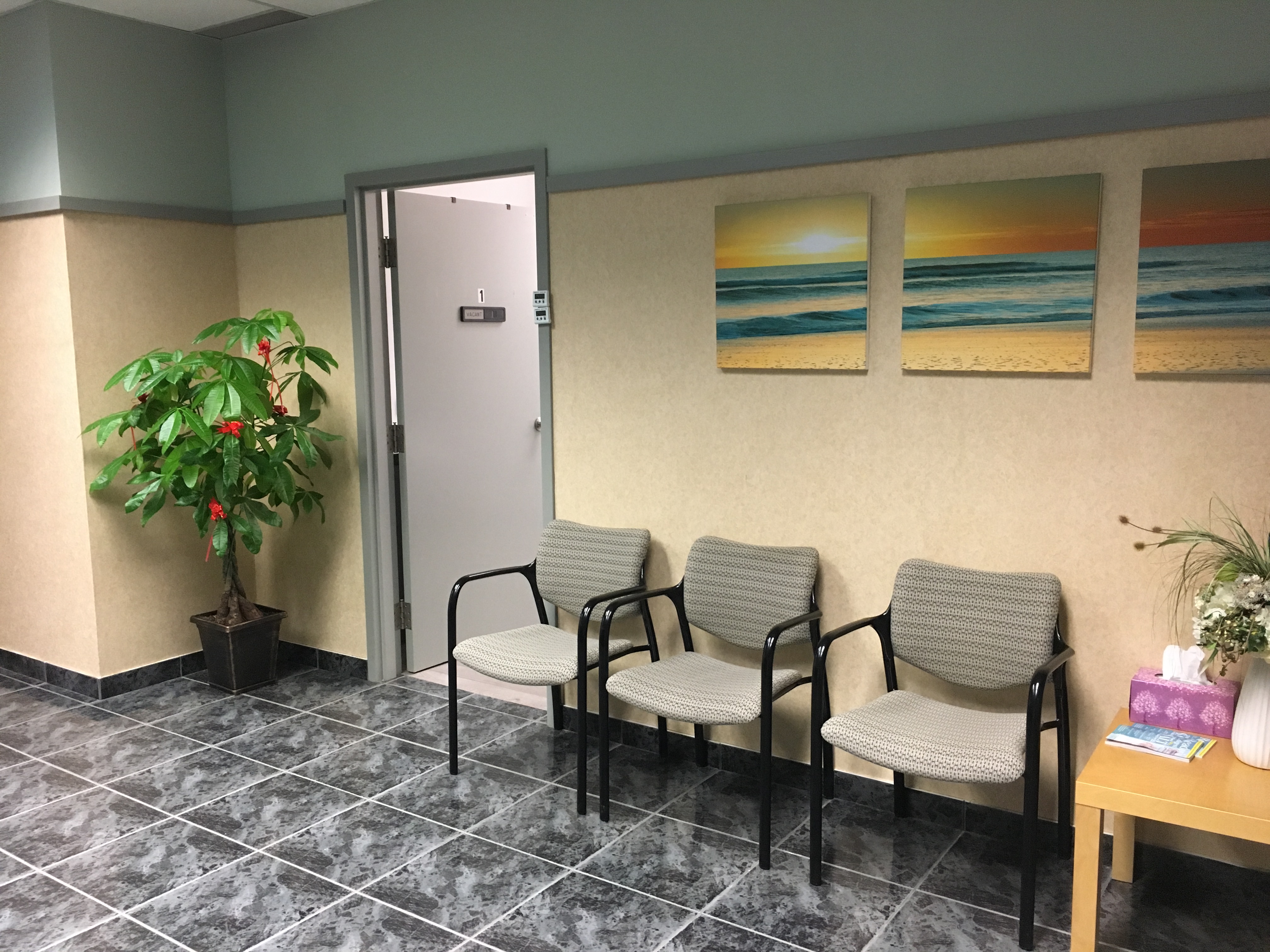- Amy is one of the few Physiotherapists in Toronto who is also a Registered Acupuncturist. She has received 2 years (2000+ hours) of formal acupuncture training at Eight Branches of Eastern Medicine. Comparatively, most Physiotherapists have taken only weekend or intensive acupuncture courses (100 hours).
- To further her knowledge of acupuncture, Amy has apprenticed from Toronto’s top-rated Acupuncturists, Susan Hu and May Huang.
- Most Physiotherapists use acupuncture as a secondary therapy to their preferred treatment (i.e., electro-machines, heat pads, manipulations, prescribed exercises), but at North York Acupuncture & Physiotherapy, acupuncture is our primary form of treatment. To learn more about our treatment approach.
Some people may assume that acupuncture is very painful. That’s a misconception. The needles used for acupuncture are solid and extremely fine – they are 90% thinner compared to needles used in injections and blood drawing. When the needles reach the acupuncture points, there is a sensation that could be described as tingling or numbing, rather than “painful.” Sometimes the sensation may transfer to other parts of the body.
- Many people seek out massage therapy when they want to get rid of their pain or knotted muscles. But deep tissue massage can be time consuming and very painful for the recipient. Acupuncture is special in its ability to access the knotted muscles and restoring the tight muscles to their natural length and function, all without the patient feeling pain.
- First, Amy palpates and locates the exact contracted muscle, called “trigger point” that is involved in your pain, and then places 2-4 needles into this knotted muscle. Then she will connect an electrical source to the needle to make the needle gently vibrate. This vibration has an anti-spasmodic effect and will work to undo the tension in the taut muscle and you will experience relief from your pain typically within 1-3 visits. Acupuncture opens up the contracted muscle, increases blood and oxygen to the tissue, and restores length and function to the muscle.
- Many people who are skeptical of acupuncture report that they tried acupuncture and it did not produce any results. However, they usually have received only one acupuncture treatment. Amy likes to remind patients that acupuncture is similar to prescription medication in which multiple dosages are required to achieve the desired outcome.
- In addition to adhering to a course of treatment, it is also important to see a Physiotherapist who is also a Registered Acupuncturist. This is because a Registered Acupuncturist is someone who has formally studied acupuncture for 2 years at a school and passed a very comprehensive licensing exam. Most Physiotherapists or Chiropractors who are not licensed Acupuncturists have only taken a weekend course in acupuncture (20-200 hours) and is using it as a secondary treatment option.
- In summary, to achieve the desired outcome from acupuncture, you need to see a Registered Acupuncturist and adhere to a course of treatment which typically ranges from 5-12 visits.
Many people who hear the word needle and immediately think it is risky because of the possibility of infections. Rest assured, there is no risk for infection because all of the acupuncture needles we use are one time use only, disposable and sterile.
The answer is usually yes. Acupuncture is excellent for any type of pain conditions that involves muscles, bone and nerves. Acupuncture is amazing in its ability to produce anti-inflammatory, pain-relieving, and regenerative effects.
Yes, acupuncture is a treatment method that is covered under physiotherapy.
It ranges from 2-10 needles.
How does acupuncture work in a scientific and physiological perspective?
- Acupuncture reduces inflammation by improving blood flow going to the injured areas.
- Acupuncture increases the circulation of oxygen rich, nutrient rich blood to the brain, organs & glands, and muscles & joints in order to promote healing.
- Acupuncture produces an anti-spasmodic, muscle relaxing effect.
- Acupuncture releases opioid peptides for pain relief. And acupuncture isn’t addictive. No one is OD’ing from it. This is why acupuncture is a popular option for pain relief because people understand the importance of choosing healthier options.
- Acupuncture stimulates the brain to release a cocktail of feel-good endorphins which helps with pain relief.
- Acupuncture stimulates the widening of your blood vessels to increase the amount of blood that flows to your injured area.
- Acupuncture stimulates the release of oxytocin to activate the parasympathetic nervous system. When your body is injured or in pain, it is undergoing a lot of stress, which activates your body’s fight or flight response. Acupuncture activates your body’s relaxation response, which is why it can relax your muscles and decrease your stress levels – all of which will help you heal faster.

